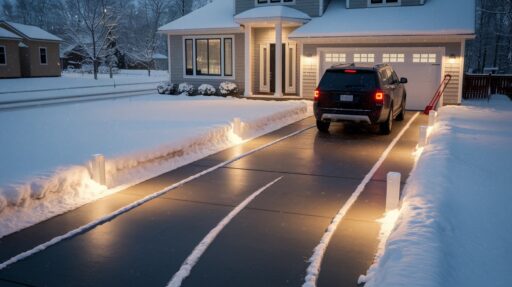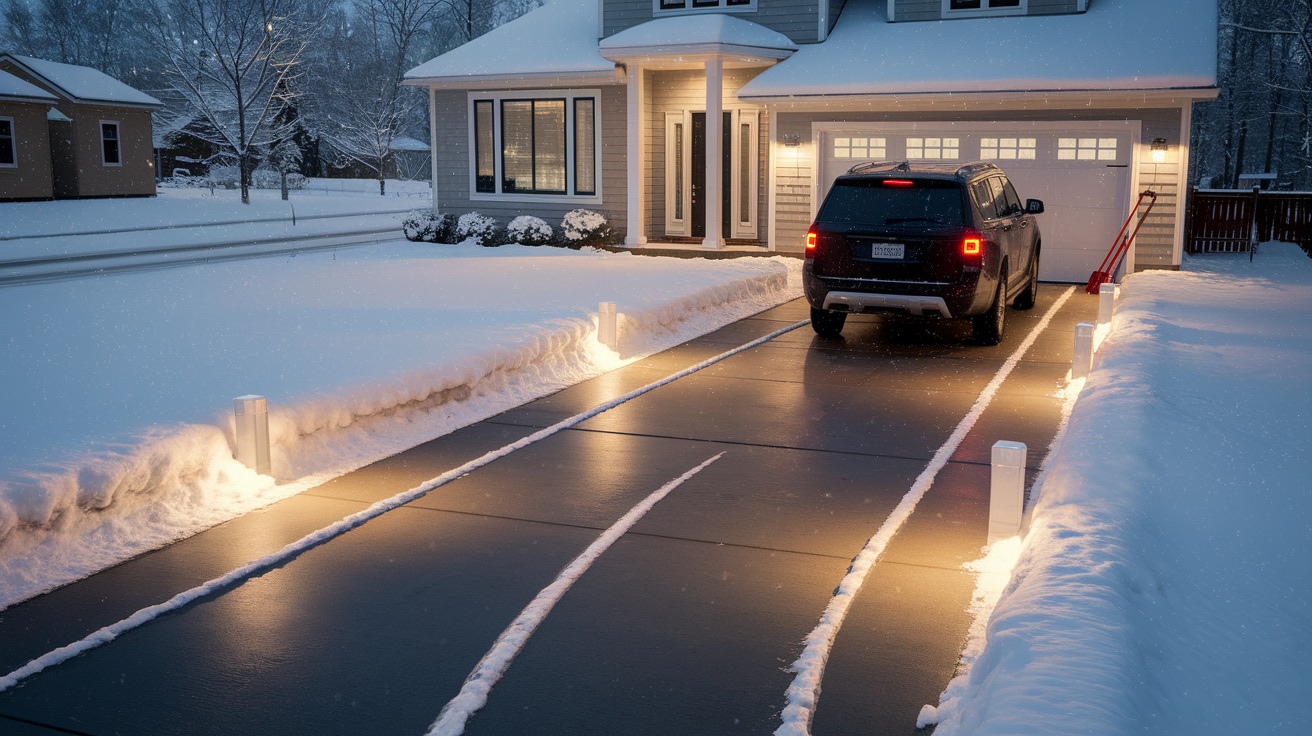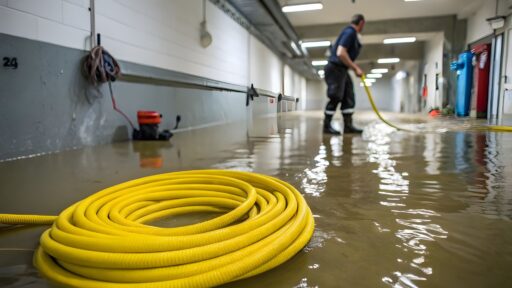Snow-covered driveways are a big problem for many homeowners during winter, making it easy to slip and get hurt.
Heated driveways, also called snow-melting systems or radiant heat driveways, are a smart way to stay safe and save time.
These systems melt snow and ice on their own, so you do not have to shovel or plow your driveway again.
Many people choose this upgrade because it helps prevent injuries and keeps the driveway clear all winter long.
In this guide, you will learn how heated driveways work, how much they cost, and which type fits your home.
We also explain the cost to install, run, and take care of these systems to help you decide what is best.
First, let’s look at how these heated driveways really work.
How Heated Driveways Work?
Heated driveways use radiant heat systems that are built right into the driveway surface.
These systems work by placing heating elements beneath your concrete or asphalt driveway.
The heat travels upward to warm the surface and melt snow and ice before it can pile up.
Temperature and moisture sensors detect when snow is falling or ice is forming.
The system turns on automatically when conditions are right.
The main goal is to keep your driveway clear without any work from you.
Rather than waiting for the snow to pile up and then shoveling it away, heated concrete or asphalt gently melts the snow as it lands.
This prevents dangerous ice patches and makes your driveway safe to walk and drive on.
Here are the main types of heated driveways and how they differ in cost and functionality.
Heated Driveway Types Explained
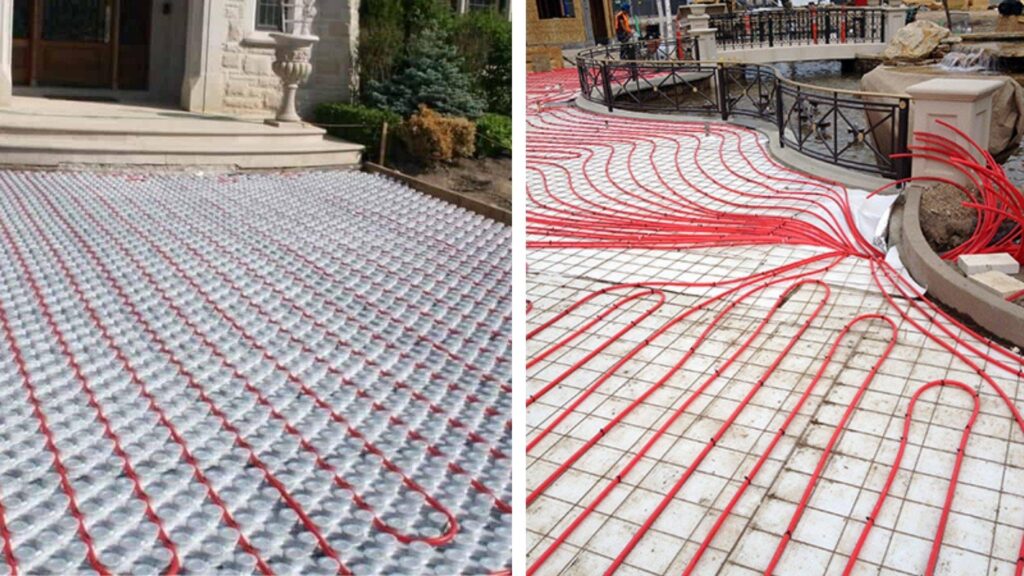
Choosing the right heated driveway system depends on your needs, budget, and local climate.
When deciding, it’s important to consider the size of your driveway and the energy rates in your area, as each system has its strengths.
Electric Heated Driveways
Electric systems use heated cables installed beneath the driveway surface to generate warmth and melt snow.
They are best suited for smaller driveways and are typically easier and more affordable to install compared to hydronic options.
Hydronic Heated Driveways
Hydronic systems work by circulating warm water through plastic tubing laid under the driveway.
These are ideal for larger driveways or commercial parking areas.
While the upfront cost is higher, they usually offer lower energy bills over time, especially in colder climates.
Portable Heated Driveways
Portable heated driveway mats are a convenient, affordable alternative to built-in systems.
They consist of durable electric mats placed on the driveway, heating only tire tracks to melt snow and ice.
Easy to install and remove, they plug into standard outlets and are ideal for light snow areas or temporary use.
No matter which system you choose, understanding your property’s layout and long-term needs will help you make the most cost-effective decision.
Complete Cost Breakdown for Driveway Heating Systems
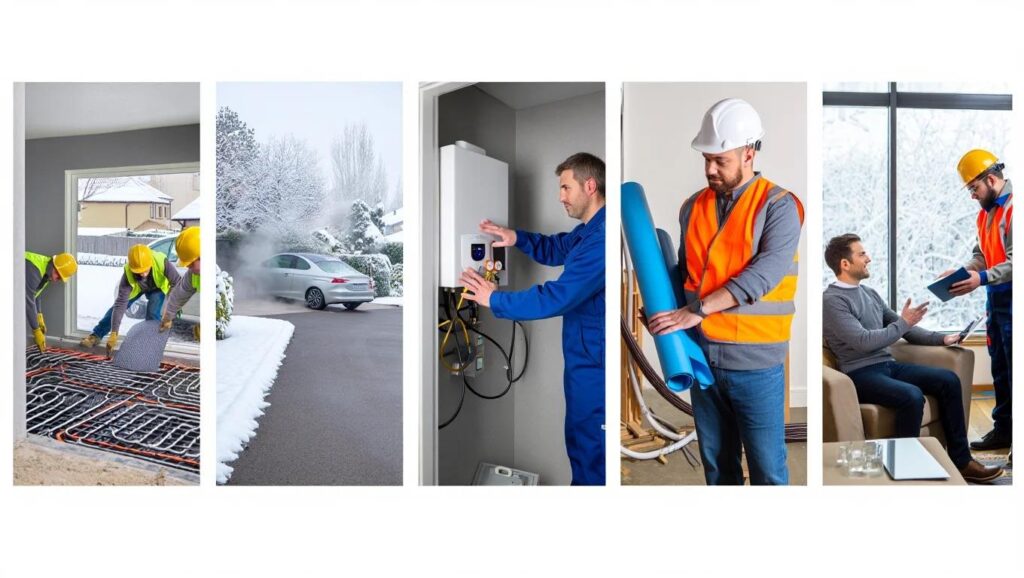
Driveway heating systems eliminate snow removal and ice hazards but require a significant upfront investment.
Here’s a comprehensive cost breakdown for each type of driveway:
| ASPECT | ELECTRIC SYSTEM | HYDRONIC SYSTEM | PORTABLE MAT |
|---|---|---|---|
| Installation Cost (500 sq ft) | $7,000 – $12,000 | $6,000 – $17,000 | $0 – $500 (mostly DIY setup) |
| Material Cost (Range) | $3,200 – $7,000 | $4,150 – $8,700 | $2,500 – $5,000 ($5–$10 per sq ft) |
| Operating Cost (Per Hour) | $0.60 – $3 | $0.64-$3.25 | $0.50 – $2 |
| Maintenance Cost (Per Year) | $100 – $300 | $200 – $500 (boiler inspection extra) | $0 – $100 (occasional inspection) |
| Warranty Cost (5–10 years) | Often included | Often included | Usually included with purchase |
| Permit & Regulations Cost | $200 – $600 | $300 – $800 | $0 (no permits typically required) |
Note: Costs can vary depending on the system type, driveway size, and regional factors.
Additional Costs
Other than installation, operational, and maintenance costs, other aspects such as old driveway removal, resurfacing, or system upgrades can add up.
You may also face extra charges for electrical panel changes, boiler upgrades, smart controls, or added insulation.
These costs are frequently encountered and can significantly increase the overall budget of installing a heated driveway system.
Factors That Affect Heated Driveway Costs
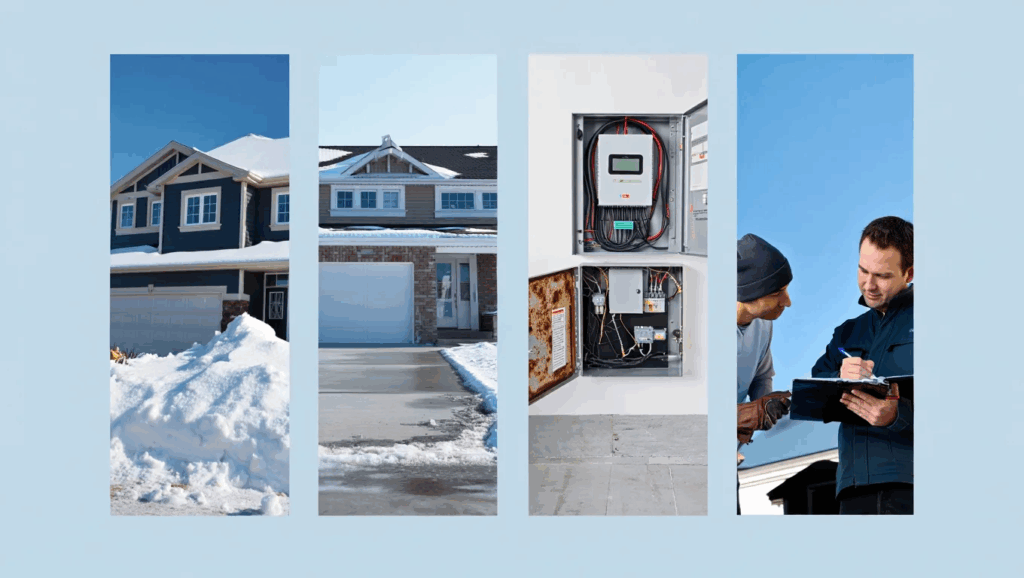
Many factors can change how much you’ll pay for your heated driveway.
Understanding these helps you get accurate estimates and plan your budget.
- Climate and snowfall: Areas with heavy snow need more powerful systems
- Local electricity and gas prices: Energy costs vary widely between states
- Labor costs: Metropolitan areas charge more for installation work
- Distance from power source: Long electrical runs increase installation costs
- Driveway slope and drainage: Steep or poorly draining areas need extra work
- Existing driveway condition: Removal and disposal add $1-$3 per square foot
Regional installation expenses can vary by 30-50% between different parts of the country.
Getting quotes from local contractors familiar with radiant heating labor costs in your area gives you the most accurate pricing for your specific situation.
One more tip, checking a quick comparison can assist you in choosing the best system for your needs.
Financing Options for Heated Driveways
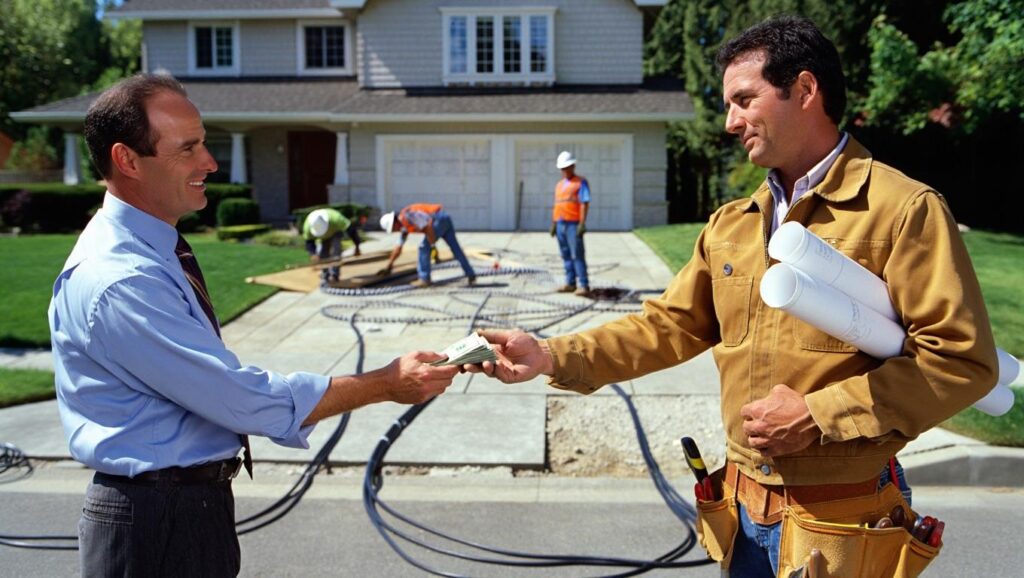
Currently, the US government does not offer special money back for heated driveways.
Most government programs only help with things like heating systems and house insulation instead.
Many contractors will let you pay in monthly payments or offer special deals.
You can also use personal loans or borrow money against your house value.
Some electric companies give money back for energy-saving upgrades, but rarely for driveways.
A few states and cities have programs for saving energy, but not for driveways.
Most people pay for heated driveways with contractor payment plans or personal loans.
You should always check with your local government and electric company for help.
Electric, Hydronic, or Portable: Which One is Best?
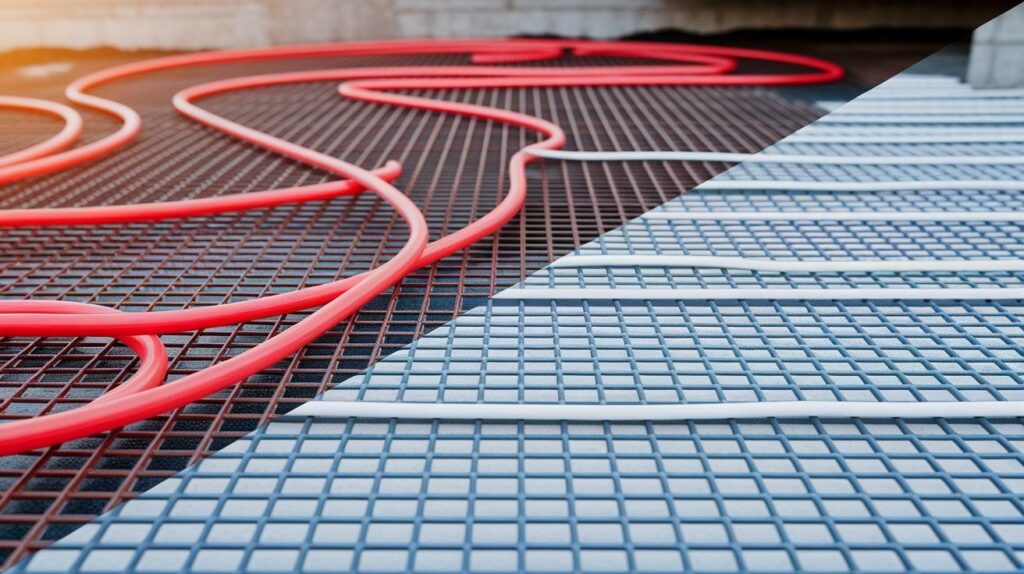
Choosing between electric, hydronic, and portable heated driveway systems depends on your budget, property layout, and how often you deal with snow.
Each option offers specific pros and cons that affect installation, maintenance, and long-term savings.
| FACTOR | ELECTRIC SYSTEMS | HYDRONIC SYSTEMS | PORTABLE SYSTEMS |
|---|---|---|---|
| Upfront Cost | Lower | Higher | Lowest |
| Installation | Simpler, faster | More complex, longer | Easy, DIY |
| Heat-up Speed | Instant | 15-30 minutes | 30-60 minutes |
| Operating Cost | Higher electricity usage | Lower with gas/oil | Moderate |
| Maintenance | Minimal | Annual boiler service | Occasional only |
| Best Use | Small-medium driveways | Large driveways | Temporary |
| Retrofitting | Possible | Requires full removal | Easy |
| Reliability | Very reliable | Depends on boiler | Above Average |
| Lifespan | 15-20 years | 20-25 years | 5-10 years |
Electric systems are best if you want something straightforward.
They heat up quickly and require minimal maintenance, although they may be more expensive to operate in areas with high electricity rates.
Hydronic systems require longer installation and maintenance times, but are more efficient for larger driveways.
While the upfront cost is higher, they can save money over time, especially with gas or renewable energy.
Portable systems offer the easiest setup and lowest cost.
Although they have shorter lifespans and slower heat-up times, they are suitable for small areas or temporary use.
Each option suits different needs, so consider your budget, driveway size, and the frequency of snowfall before making a choice.
Let’s review some tips to help you save money while keeping your driveway safe.
Cost-Saving Tips for Heated Driveway Owners
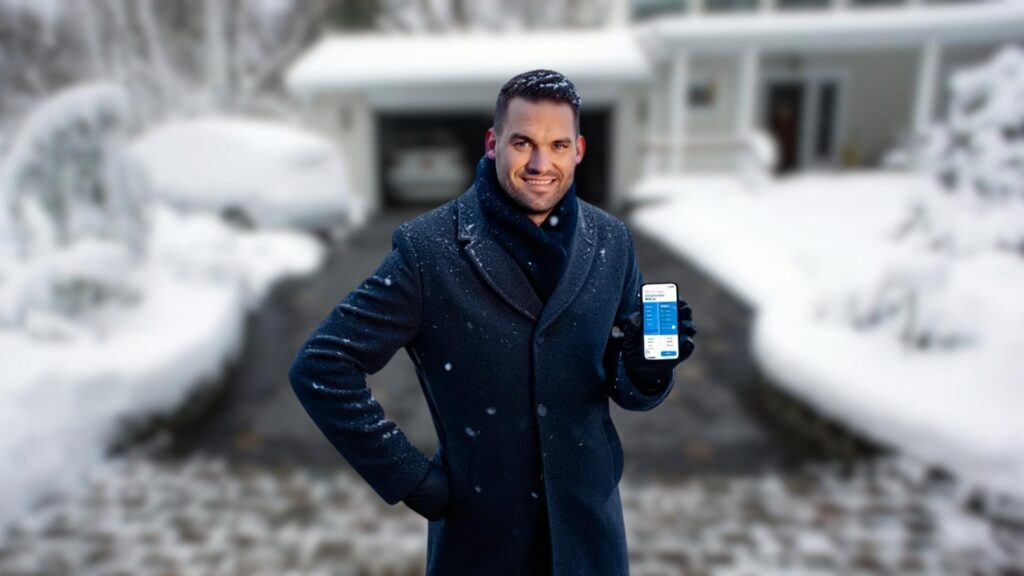
Smart planning and good habits can significantly reduce your heated driveway expenses over time.
These energy-efficient heated driveway strategies help reduce operating costs while maintaining excellent performance.
- Install smart controls with timers: Prevents unnecessary system runtime and can cut energy costs by 20–30%.
- Use zoning systems: Heat only high-traffic areas or tire tracks instead of the entire driveway to save energy.
- Add insulation under hydronic tubes: Minimizes heat loss and improves system efficiency.
- Schedule installation with driveway replacement: Reduces labor and excavation costs by combining projects.
- Maintain proper drainage: Prevents water pooling and unnecessary system activation during thaw cycles.
- Consider smaller coverage areas: Focus heating on essential zones like the main driving path to cut material and energy costs.
Zoning systems for snow melt can reduce operating costs by 40-60% compared to heating entire driveways.
Following these radiant heating savings tips can save you thousands of dollars over the system’s lifetime while keeping your driveway safe and clear!
Who Should Get a Heated Driveway?

Heated driveways are awesome for people in areas with heavy snow and ice during the winter months.
They melt snow fast, so you don’t have to shovel and feel tired or sore.
If your driveway is steep or hard to clear with a shovel, this system makes things easier.
It stops ice from building up, keeping everyone safe from slipping and falling.
Families leaving early in the morning enjoy quick, safe trips to their cars.
Older adults and parents with young children find it extremely useful for daily commutes and errands.
It also boosts your home’s value if you want to sell it later.
If snow removal feels like a big task, a heated driveway saves time, keeps you safe, and makes winter much easier.
Final Notes
Heated driveways are a smart investment for homeowners looking to eliminate the stress, danger, and hard work of winter snow removal.
While the upfront costs can seem steep, the long-term benefits make it a valuable upgrade.
Whether you opt for an electric, hydronic, or portable system, knowing the full cost breakdown helps you plan wisely and choose a setup that matches your climate, needs, and budget.
With the right installation, a heated driveway not only offers daily convenience but also boosts your home’s value, curb appeal, and seasonal livability.
Say goodbye to shoveling and slippery paths.
Stay warm, stay safe, and let your driveway handle winter for you.
Looking to upgrade your home’s exterior beyond snow solutions?
For more expert advice on home exteriors, feel free to click here and explore other blogs that you might enjoy.

